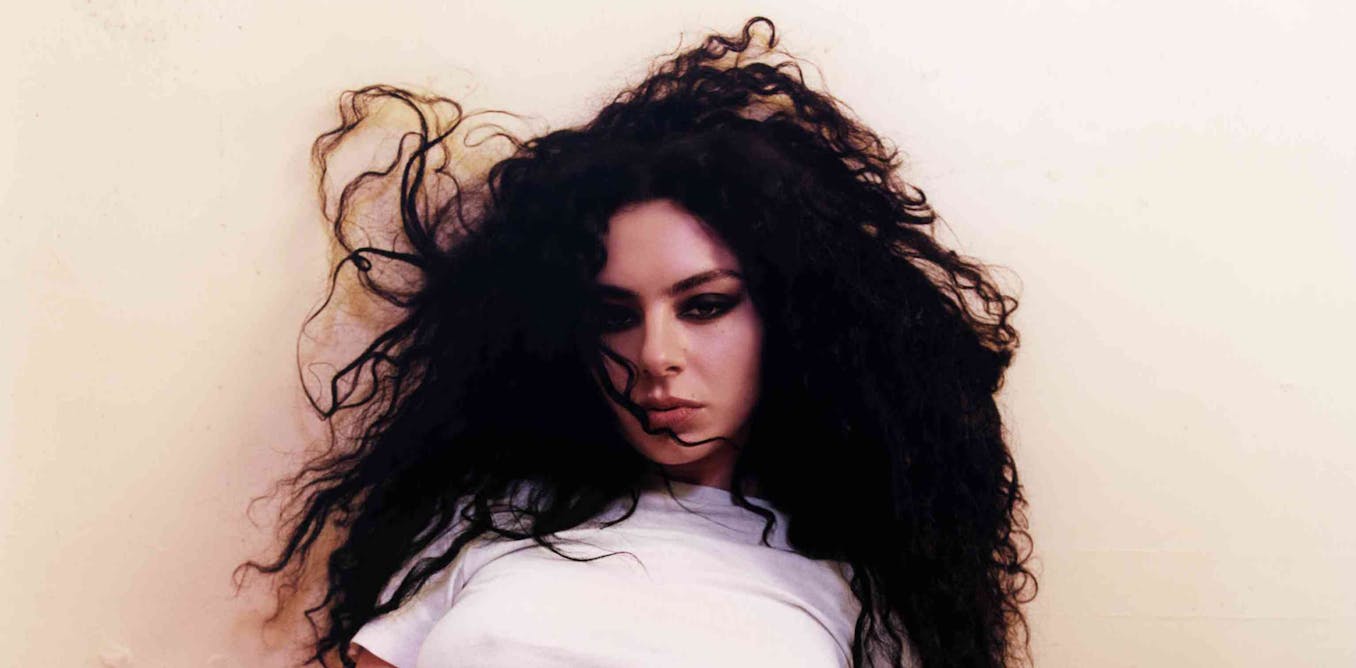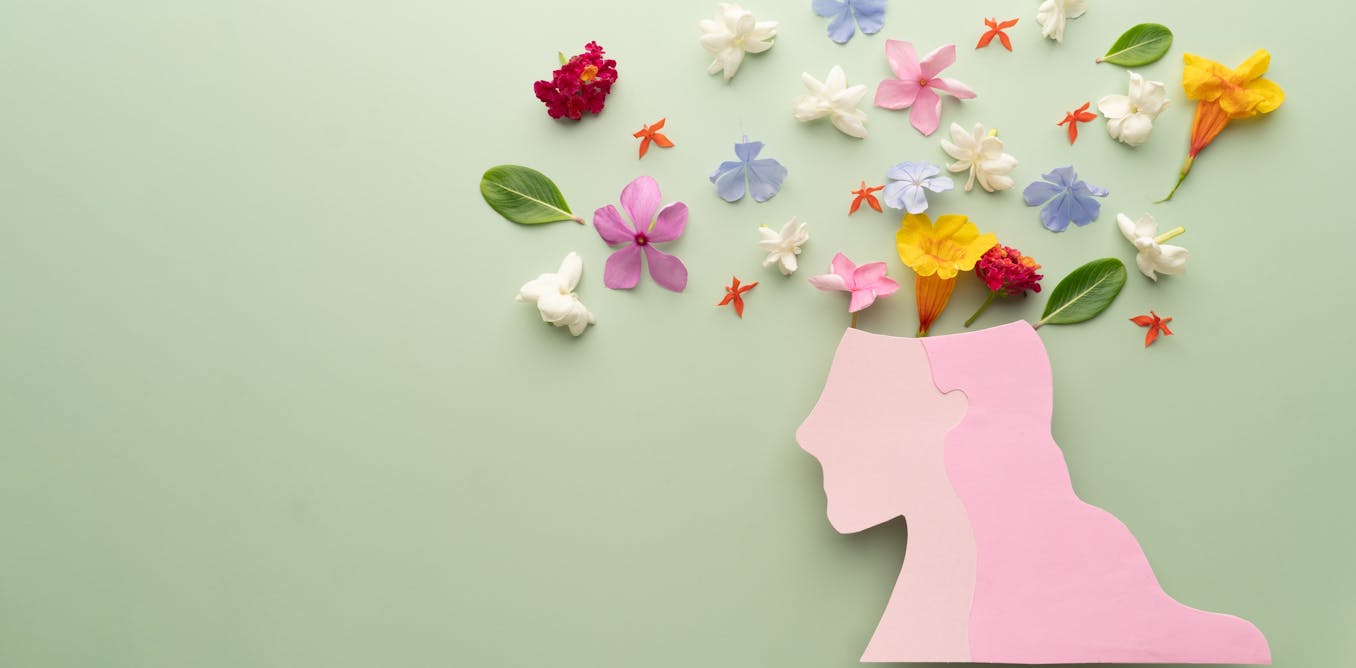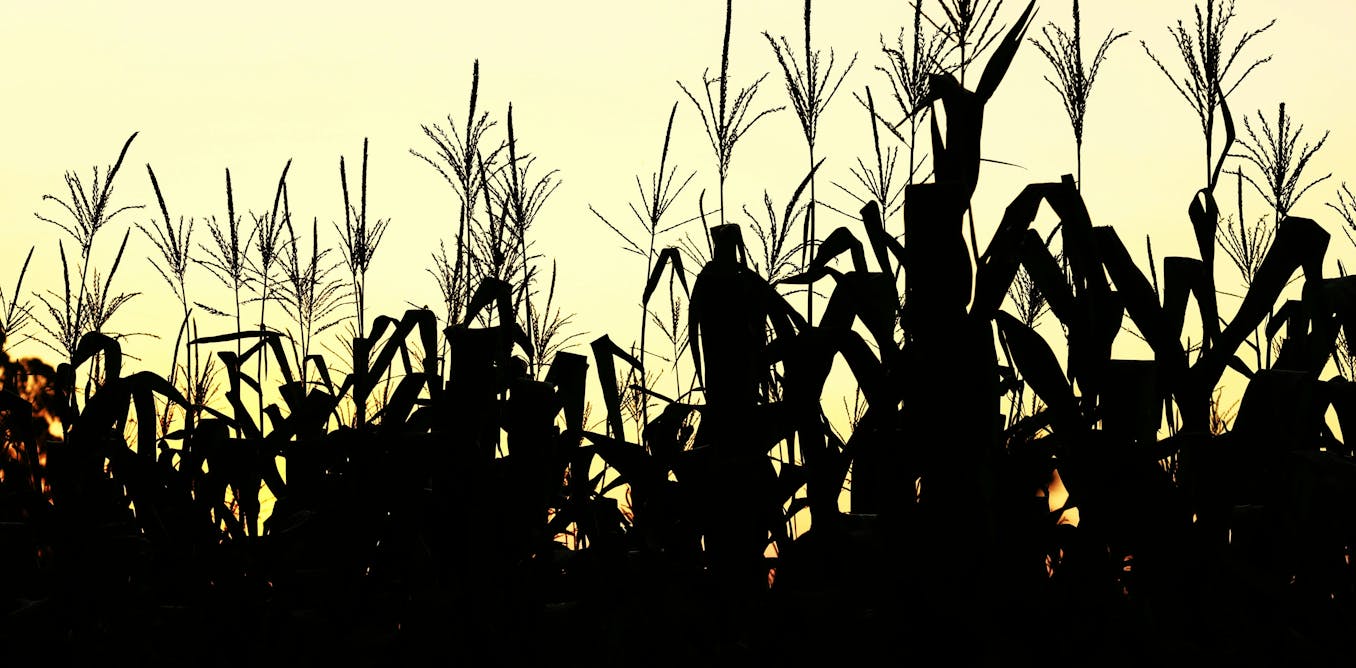In the song Girl, So Confusing on the 2024 album Brat, Charli XCX declares to an unnamed addressee: “You’re all about writing poems. But I’m about throwing parties.”
Fan speculation that fellow singer Lorde was the songwriter-poet in question was confirmed two weeks after the album’s release with the precisely titled remix, The Girl, So Confusing Version With Lorde. But what is curious about the first version of this song is Charli’s admission that she sees herself as less of a poet than Lorde.
In a recent interview, Charli said that she was over “the idea of metaphor and flowery lyricism and not saying exactly what I think, the way I would say it to a friend in a text message”. But is Brat really not poetry? As a literary researcher, I would classify Charli as a contemporary poet – especially if we contextualise her work within a wider tradition of modern literary writing.
The desire to write directly is not unusual in poetry from the last 100 years. William Carlos Williams’ famous poem The Red Wheelbarrow (1923), for example, employs very specific images:
so much depends
upon
a red wheel
barrow
glazed with rain
water
beside the white
chickens.
As the writer Benjamin Voight has pointed out, Carlos Williams’ plain language reflects his philosophy that his verse should use the language of his local community. His work therefore resists the notion that poetic verse necessarily has to be flowery. However, as a leading figure of the American imagist movement, Williams’ work is not cold or devoid of meaning; he still aimed to evoke emotion through his concrete language and series of images.
Charli XCX’s own writing often resembles imagist poetry. Take the Brat track Everything is Romantic:
Bad tattoos on leather-tanned skin
Jesus Christ on a plastic sign,
Early nights in white sheets with lace curtains
Capri in the distance.
Here, Charli draws upon her tendency to catalogue various images in her songwriting, from lavender Lamborghinis in Vroom Vroom (2016) to French manicures in Brat’s 365. Like Carlos Williams’ rain-glazed wheelbarrow, reviewers have praised how Charli’s lyrics in Everything is Romantic manage to paint the listener a highly sensory feeling of holidaying in Italy.
Visually, the Brat vinyl itself shares much in common with poetic form. A delightful detail of The Red Wheelbarrow is that each stanza looks like a little wheelbarrow. In turn, the Brat vinyl’s lyric booklet resembles a book of shape poems, while the track list on the vinyl card sleeve visually resembles music-poems such as John Cage’s Lecture on Nothing (2012).
Of course, I am not the first person to identify Charli’s place within a wider poetic or literary tradition. In 2022, the Twitter user @thejoeynova tweeted: “Charli XCX manages to accomplish in four minutes and 56 seconds (Party 4 U, 2020) that which takes F. Scott Fitzgerald an entire 208 pages (The Great Gatsby, 1925) to express.”
Although Charli would probably be even more reluctant to compare herself to a great American novelist than she is to fellow singer Lorde, her listeners have been able to see how her lyrics might sit alongside some of the most celebrated texts in literary studies.
When I first listened to the lyrics to Brat’s Sympathy is a Knife, it occurred to me that the narrative voice can be read as a kind of 21st-century version of Hedda Gabler (1891). The play, by Henrik Ibsen, ends with the protagonist shooting herself as an artistic statement. Meanwhile, Charli sings: “Why I wanna buy a gun? Why I wanna shoot myself?”
The heroines of Brat and Hedda Gabler share many perspectives: a desire to shoot themselves, a fraught relationship with the idea of motherhood, a taste for the fine things in life and a depressive romanticism.
The New York Public Library for the Performing Arts / Billy Rose Theatre Division
Strikingly, reviewers often describe Gabler – one of the most prestigious theatrical roles – as a “spoiled brat”. Despite the often gendered use of this word in the criticism of the play, there is an earnestness to Gabler’s characterisation, to her boredom and her romanticism, and even to her so-called brattiness. Charli’s record likewise asks: what if we lean into our brat-ism, especially as female artists?
Turning to the contemporary landscape of literature, Charli XCX’s Brat can be seen as part of a multimedia tradition of women’s writing that is honest and no longer afraid of being labelled “bratty”.
With her allusions to the films Spring Breakers (2012) and Mean Girls (2004) – both track titles on Brat – Charli shows that she is taking seriously what has historically not been taken seriously in literary studies and cultural criticism: media about and favoured by young women.
Critics are increasingly examining their prejudice towards media that has been derided for its femininity, girlishness and brattiness – perhaps most notably, Sofia Coppola’s Marie Antoinette, a film that is now praised for the bratty qualities it was derided for in 2006. Indeed, online music magazine Pitchfork “rescored” Charli’s EP Vroom Vroom from a 4.5 upon its release in 2016 to a 7.8 in 2021.
With critics finally recognising Charli for her artistic prowess, it is time for literary studies – and indeed Charli herself – to recognise Brat as the poetry that it is.

The post “Brat by Charli XCX is a work of contemporary imagist poetry – and a reclamation of ‘bratty’ women’s art” by Lillian Hingley, Postdoctoral Researcher in English Literature, University of Oxford was published on 06/26/2024 by theconversation.com




































